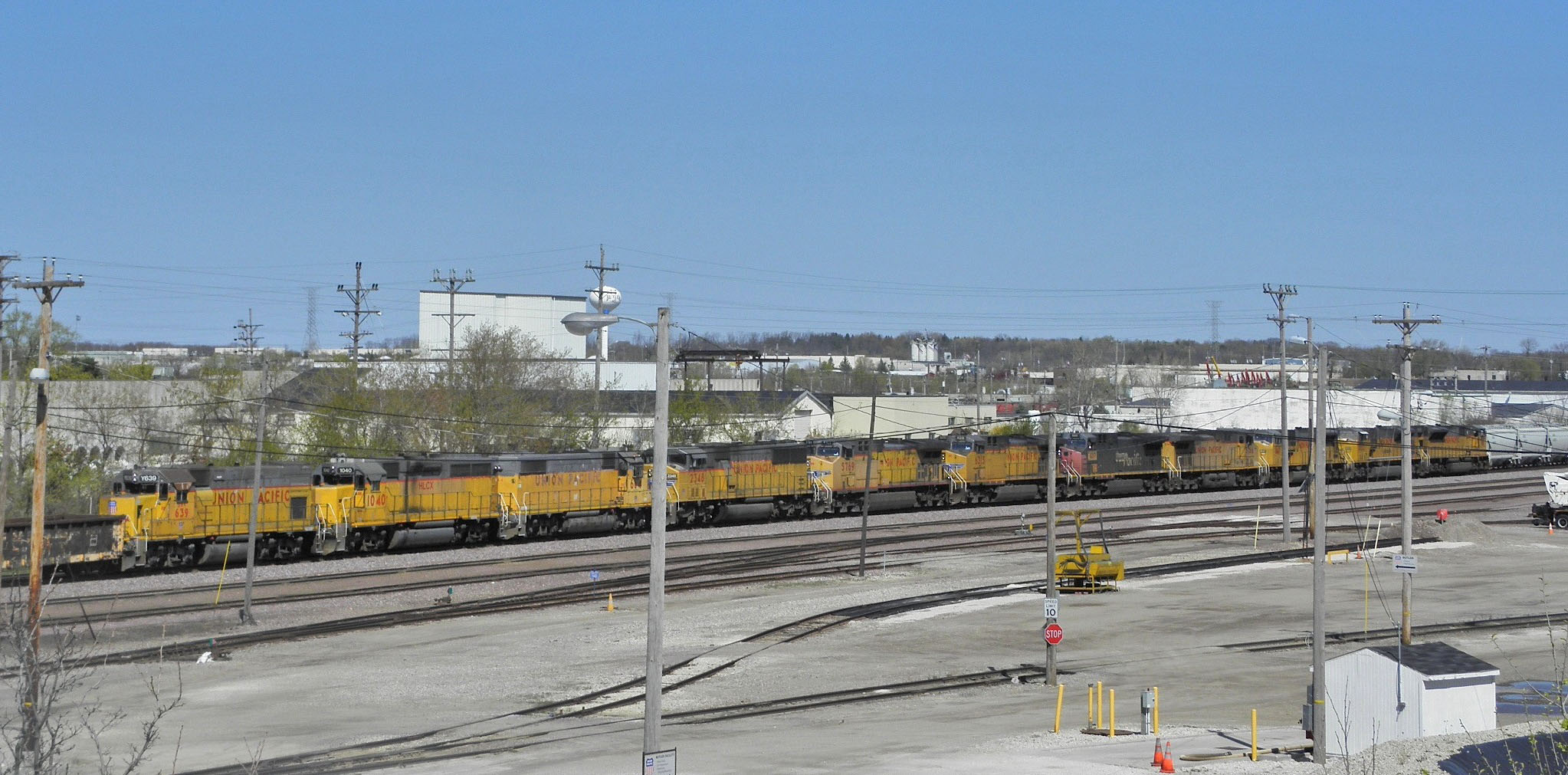The Village of Butler lies on Waukesha County’s eastern border, surrounded by Menomonee Falls, Brookfield, and Milwaukee. The small, industrial village owes its existence to the railroad industry. In the twenty-first century, residents continue to celebrate that connection.
In 1909, the Milwaukee, Sparta, and North Western Railway built a railroad yard on Milwaukee’s 124th St. border with Waukesha County. The Chicago & North Western Railway bought the line in 1912, drawing Butler into a larger network. With one of the Midwest’s largest roundhouses and accommodating over 1500 cars, it relieved congestion from downtown Milwaukee’s freight yards. The Butler Yard was named for a dissolved nearby settlement. Soon after it was built, railroad workers and their families established the New Butler settlement on the Waukesha County side of the yard. New Butler (later renamed Butler) incorporated in 1913 with a population of 200, a number which grew to 700 by 1930. Real estate developers advertised the growing railroad town as a great investment in a new city bound to prosper. Villagers were connected to Milwaukee’s shopping and social scene with a passenger rail service nicknamed the “Shop Train.”[1]
In the late 1940s, the city of Milwaukee made Butler the centerpiece of an effort to extend its boundaries into Waukesha County. In order to make Milwaukee contiguous with the planned development, the city annexed property along Hampton Avenue. Waukesha County residents opposed Milwaukee’s growth agenda; the State Supreme Court invalidated the “Butler Strip” annexation in 1951.[2]
The village never experienced the boom promised by early speculators. From a peak in 1960 of 2,274 residents, the population has slowly declined to 1,841 in 2010. Butler has the highest percentage of renter-occupied housing and lowest median household income in Waukesha County. Butler enjoys a healthy industrial base. It is home to several major companies, including the headquarters of the Western States Envelope and Label Company, Accunet Mortgage, and MRPC, which makes molded rubber and plastic. It is also home to Cargill Meat Solutions’ northern plant. These and other industries in Butler employ 3,350 people—nearly twice the Village’s population—including 1,500 who commute from Milwaukee.[3]
The railroad’s early importance to Butler is still felt throughout the village. The Butler Historical Society exhibits railway history at the Historic Clarke House; the Butler Public Library is designed to resemble a train depot; and the village logo contains a train. As part of their one hundred fiftieth anniversary celebration in 2012, Union Pacific (which merged with the Chicago & North Western Railway in 1995) awarded Butler the title of “Train Town USA.” Butler residents demonstrated their civic pride with yearlong centennial festivities in 2013, as well as a 77% voter turnout during local elections.[4]
Footnotes [+]
- ^ “Butler’s Proud Train Town History Takes the Prize,” Milwaukee Journal Sentinel, June 22, 2012; Railway Age Gazette: Fifty-Third Quarto Volume, From July 1, 1912, to December 31, 1912 (New York, NY: Simmons-Boardman Publishing Company, 1912), 604.
- ^ John McCarthy, Making Milwaukee Mightier: Planning and the Politics of Growth, 1910-1960 (DeKalb, IL: Northern Illinois University Press, 2009), 157-160.
- ^ Southeastern Wisconsin Regional Planning Commission, The Population of Southeastern Wisconsin (Waukesha, WI: Southeastern Wisconsin Regional Planning Commission 2013) and Waukesha County Department of Parks and Land Use, University of Wisconsin-Extension, Waukesha County Municipalities, A Comprehensive Plan for Waukesha County (Waukesha, WI: 2009).
- ^ Village of Butler official website, “Administrator’s Memo,” http://butlerwi.gov/administratorsmemo.htm, accessed February 15, 2014.

0 Comments
Please keep your community civil. All comments must follow the Encyclopedia of Milwaukee Community rules and terms of use, and will be moderated prior to posting. Encyclopedia of Milwaukee reserves the right to use the comments we receive, in whole or in part, and to use the commenter's name and location, in any medium. See also the Copyright, Privacy, and Terms & Conditions.
Have a suggestion for a new topic? Please use the Site Contact Form.